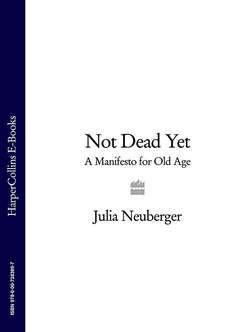Читать книгу Not Dead Yet: A Manifesto for Old Age - Julia Neuberger - Страница 34
Barriers to volunteering
ОглавлениеIn some ways, the situation with older volunteers is the mirror image of older people in employment. They volunteer in overwhelming numbers and their contribution to society is huge and irreplaceable. But there are still barriers nonetheless, certainly according to 2006 research for VITA and Volunteering England by Colin Rochester and Brian Thomas.20 Some are about the sometimes forbidding image of volunteering, and having the confidence to put yourself forward. Some are practical barriers, such as transport, particularly for poorer or disabled people. There are bureaucratic barriers related to the prevailing risk-averse official culture. There are barriers because of jargon and technology.
Insurance is one area which simply has to be tackled. Where formal volunteer networks turn people away simply because of their age, it is often because this has been stipulated by an insurance company. This is, in itself, a terrible injustice – not just to the individuals who are sent home to moulder, but to all those people they were able and willing to help. If somebody is fit and able to make a contribution, it cannot be beyond the wit of society to insist that they should be allowed to do so.
Inter-generational volunteering
The stories of much older people volunteering are heart-warming, but there may also be opportunities here that are being missed. The first of these is meeting the urgent need for inter-generational volunteering.
Some of this is happening already. Johanna Atkinson, 93, is helping children with reading but also telling them about her wartime experiences.21 Iris Denny, 83, helps 5–6 year olds and 9–10 year olds with their numeracy. Judith Cohen, 80, helps young children to read and says: ‘It makes me learn patience and humour in order to listen to slow readers.’ Inter-generational volunteering works and gives pleasure all round. But, compared to the widespread need, it is still a drop in the ocean. Some children never meet anyone older than their parents; others never meet anyone with any time. Older children badly need the time and experience that older people have, not always as mentors, often just as surrogate grandparents.
So far, the brave effort going into organizing these inter-generational links is on a much smaller scale than it needs to be to make it mainstream, and it should be a central task of the education system to reach out and set them up. That has to go into the manifesto.
Humanizing public services
There is already a great deal of volunteering in public services: every government department uses volunteers somewhere in their wider organization, even the Ministry of Defence. A great deal of it is also carried out by older people. The work they do, especially in hospitals and the health service, is absolutely vital, both to the people who receive their help and to the people doing the volunteering.
When the first time bank in the USA began in 1986, run by the Elderplan health insurance company in Brooklyn, it was designed to encourage clients to volunteer to support older people in their own homes. But the real health impact was recorded for those who were doing the volunteering, to such an extent that those taking part were able to pay 25 per cent of their premiums using the credits they earned to recognize their voluntary efforts.22
But even without this impact on the lives of helpers and helped, there is another aspect which, even if it was the only justification, would by itself justify the massive expansion of volunteering by older people in public services. They humanize the way those institutions work.
When my uncle eventually died, in the hospital which really understood and respected his needs and treated him like a human being, there were volunteers everywhere. In contrast, there was barely a volunteer to be seen in the hospital which treated him like an object, although it was very well staffed. At a time when public services are becoming more technocratic, where the crucial relationships at the heart of their objectives are increasingly discounted, volunteers can and do make all the difference. In wards where older patients might otherwise be mistreated or ignored, older volunteers provide the eyes and ears that we need. They are also able to carry out work alongside professionals that professionals can never do themselves, like befriending. If this was embedded more deeply inside services it would, as Elizabeth Hoodless of CSV puts it, ‘broaden and deepen’ what public services are able to achieve.
What is true on hospital wards can also be true in schools, in parks, or simply keeping an eye open for how rubbish is collected in the streets. In all these, older volunteers can be a critical part of making them work effectively and humanely. But we need more effective ways of drawing in and using older volunteers, to make their presence at the very heart of our public services an absolutely core aspect of what they do.
